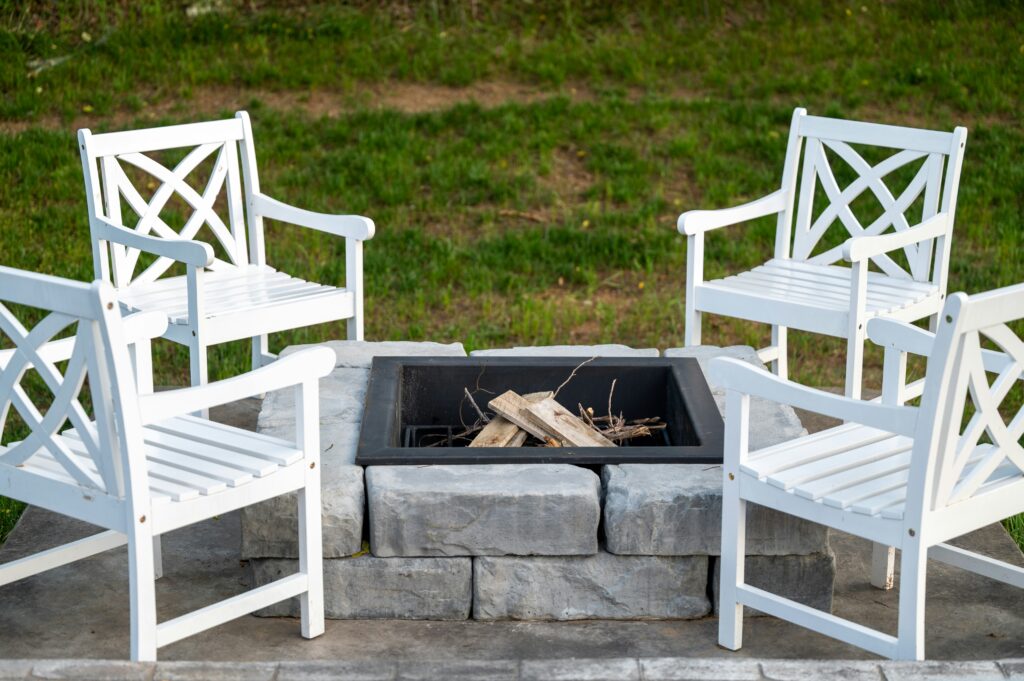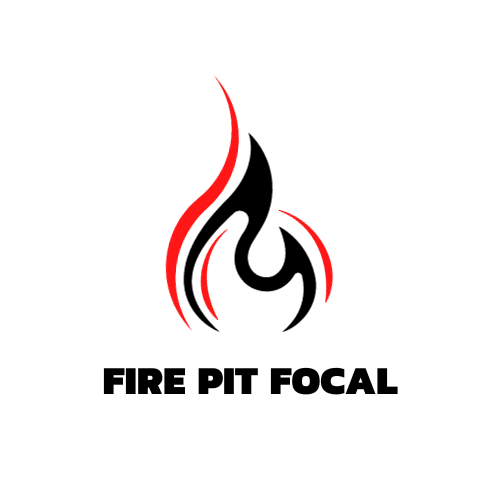Have you ever wondered if you can transform your beloved wood-burning fire pit into a sleek and convenient gas fire pit? Well, the good news is, you absolutely can! By making this conversion, you can say goodbye to the hassle of gathering and storing firewood, and hello to instant warmth and ambiance with just the flick of a switch. In this article, we will explore the possibilities of converting your wood-burning fire pit into a luxurious gas fire pit, providing you with all the information you need to make this exciting upgrade. So why wait? Let’s get started on transforming your outdoor space into a cozy haven!

Considerations before Conversion
Fuel Source
Before converting your wood-burning fire pit to gas, it’s important to consider the fuel source. Gas fire pits typically use either propane or natural gas. Propane is more commonly used for portable fire pits, while natural gas is a popular choice for permanent installations.
Propane is easily accessible and can be stored in tanks, making it convenient for moving the fire pit around. Natural gas, on the other hand, requires a fixed gas line and must be connected to your home’s existing gas supply. Consider which fuel source would be more suitable for your needs and availability before making the conversion.
Safety Measures
Safety should always be a top priority when working with fire pits, whether it’s wood-burning or gas. Before converting your fire pit to gas, ensure that you have the necessary safety measures in place.
One important safety consideration is ventilation. Gas fire pits require proper ventilation to prevent the buildup of dangerous gases. Ensure that your fire pit is located in an open area with good air circulation.
Additionally, it’s important to have a fire extinguisher or a bucket of sand nearby in case of emergencies. Familiarize yourself with basic fire safety guidelines and ensure that everyone using the fire pit is aware of them as well.
Assessing Your Wood-burning Fire Pit
Structure Evaluation
Before converting your fire pit to gas, carefully evaluate its structure. Look for any signs of damage, such as cracks or rust, that may compromise the safety and functionality of the fire pit. If you notice any significant damage, it’s recommended to repair or replace the fire pit before proceeding with the conversion.
Cleanliness
A clean fire pit is essential for optimal performance and safety. Remove any ashes, debris, or leftover wood from your wood-burning fire pit. Scrub away any built-up soot or grime using a stiff brush and mild detergent. Rinse thoroughly and allow the fire pit to dry completely before proceeding.
Materials Compatibility
Check the materials used in the construction of your fire pit to ensure they are compatible with gas. Some materials may not be suitable for gas fire pits and can potentially crack, warp, or become damaged when exposed to the heat generated by gas burners.
Commonly used materials for fire pits, such as cast iron, steel, or stone, are usually compatible with gas burners. However, it’s always advisable to consult the manufacturer’s guidelines or seek professional advice if you’re unsure about the compatibility of your fire pit materials.
Converting Your Fire Pit to Gas
Selecting a Gas Burner Kit
To convert your wood-burning fire pit to gas, you will need a gas burner kit. Gas burner kits are readily available in various sizes and designs to suit different fire pit configurations. Consider the size and shape of your fire pit, as well as your desired flame pattern, when selecting a gas burner kit.
It’s recommended to choose a high-quality gas burner kit from a reputable manufacturer to ensure proper functionality and safety.
Gathering the Necessary Tools
Before starting the conversion process, gather the necessary tools for the job. This may include a wrench, pliers, a gas line cutter, Teflon tape, and a leak detection solution.
Having these tools on hand will make the conversion process smoother and more efficient.
Disconnecting the Wood-burning Setup
Start by disconnecting the wood-burning setup from your fire pit. This may involve removing any grates, screens, or other accessories that were used for wood burning.
Carefully disconnect the existing chimney or vent if your fire pit has one. Depending on the design of your fire pit, this step may vary. Follow the manufacturer’s instructions or seek professional guidance if you’re unsure about the disconnection process.
Installing the Gas Burner
Follow the manufacturer’s instructions to install the gas burner kit in your fire pit. This typically involves attaching the burner to the bottom of the fire pit and securing it in place.
Ensure that the gas burner is installed securely and that there is adequate space between the burner and the fire pit walls to allow for proper airflow.
Connecting Gas Supply
If you’re using propane, connect the gas supply hose to the gas burner using the appropriate fittings. If you’re using natural gas, consult a professional to install a gas line from your home’s existing gas supply to the fire pit.
When connecting the gas supply, it’s essential to use Teflon tape to seal the fittings and prevent gas leaks. Check for any signs of leaks using a leak detection solution, and tighten the fittings as necessary.
Testing for Leaks
Once the gas burner and gas supply are connected, it’s crucial to test for leaks. Apply a small amount of the leak detection solution to all gas connections and observe for bubbles. If bubbles appear, it indicates a gas leak.
If you detect a leak, immediately turn off the gas supply and tighten the fittings. Repeat the leak detection test until no bubbles are observed.
Costs Involved
Gas Burner Kit Cost
The cost of a gas burner kit can vary depending on the size, brand, and features of the kit. On average, gas burner kits range from $100 to $500 or more. It’s advisable to invest in a high-quality kit to ensure safety and durability.
Professional Installation Cost
If you’re unsure about the conversion process or prefer to have a professional handle the installation, you may incur additional costs for professional labor. The cost of professional installation can vary depending on your location and the complexity of the installation. It’s recommended to obtain quotes from reputable professionals and compare prices before making a decision.

Maintenance and Care
Regular Cleaning
To ensure the longevity and optimal performance of your gas fire pit, regular cleaning is essential. Remove any debris or ashes from the burner area, clean the burner ports using a wire brush, and wipe down the fire pit with a mild detergent.
Avoid using harsh chemicals, abrasive cleaners, or abrasive materials that could damage the fire pit’s surface. Regular cleaning will help prevent blockages and ensure a consistent flame.
Inspecting Gas Connections
Regularly inspect the gas connections of your fire pit to ensure there are no signs of leaks or damage. Check for any wear and tear on the gas supply hose, fittings, and gas burner. If you notice any issues, promptly address them to prevent any potential hazards.
Replacing Parts
Over time, certain parts of your gas fire pit may become worn or damaged. It’s important to replace these parts to maintain the safety and functionality of the fire pit.
Refer to the manufacturer’s guidelines or consult a professional to determine which parts may need replacement and how to properly install them.
Frequently Asked Questions
Can I still use wood in a gas fire pit?
No, it is not recommended to use wood in a gas fire pit. Gas fire pits are specifically designed to burn gas fuel, whether propane or natural gas. Wood can create excessive smoke, produce more ashes, and may damage the gas burner and other components of the fire pit.
Are there any regulations regarding gas fire pits?
Regulations regarding gas fire pits can vary depending on your location. It’s essential to check with your local authorities or consult a professional to ensure that your gas fire pit complies with any relevant regulations or permits required in your area.
Can I convert any fire pit to gas?
Not all fire pits are suitable for conversion to gas. Wood-burning fire pits with proper ventilation, sturdy construction, and compatible materials are generally the best candidates for conversion. Ensure that your fire pit meets the necessary criteria before considering a gas conversion. It’s advisable to seek professional advice if you’re unsure about the suitability of your fire pit.

Conclusion
Converting your wood-burning fire pit to gas can offer numerous benefits, including cleaner burning, ease of use, and a more controlled flame. However, it’s crucial to carefully consider the fuel source, assess the condition of your fire pit, and follow the necessary safety measures before proceeding with the conversion.
By selecting a suitable gas burner kit, performing the installation correctly, and regularly maintaining your gas fire pit, you can enjoy the warmth and ambiance of a fire pit with the convenience of gas fuel. Always prioritize safety and consult professionals if needed to ensure a successful and enjoyable gas fire pit conversion.


